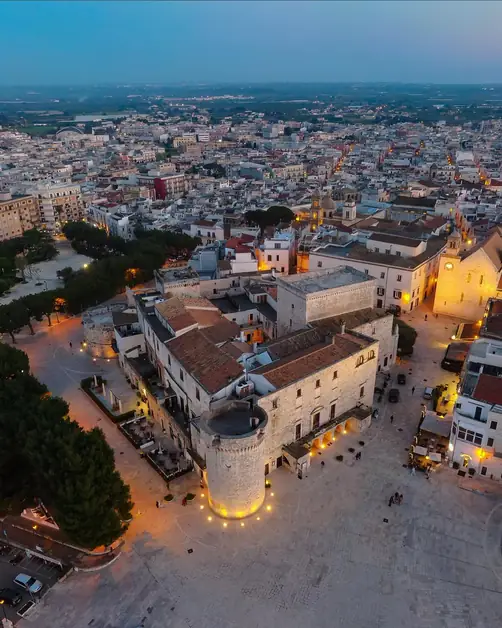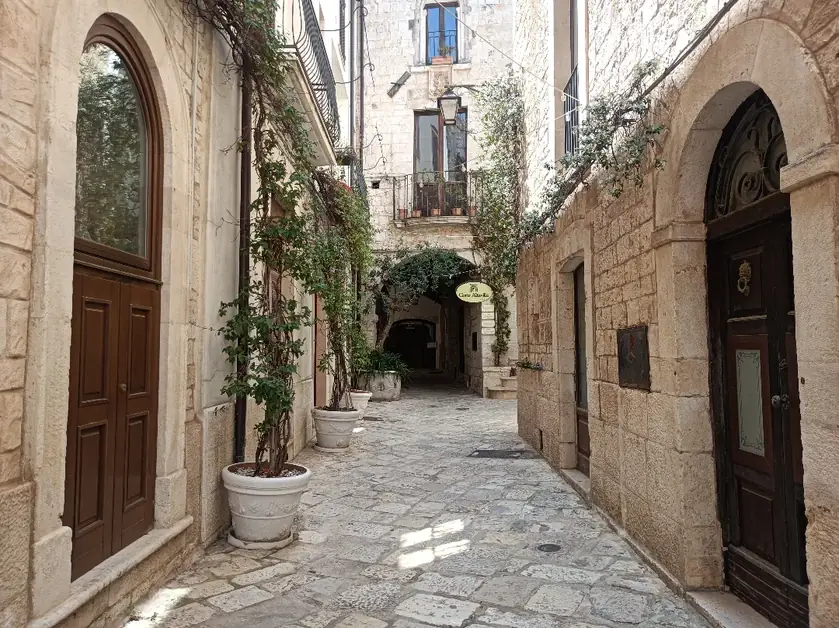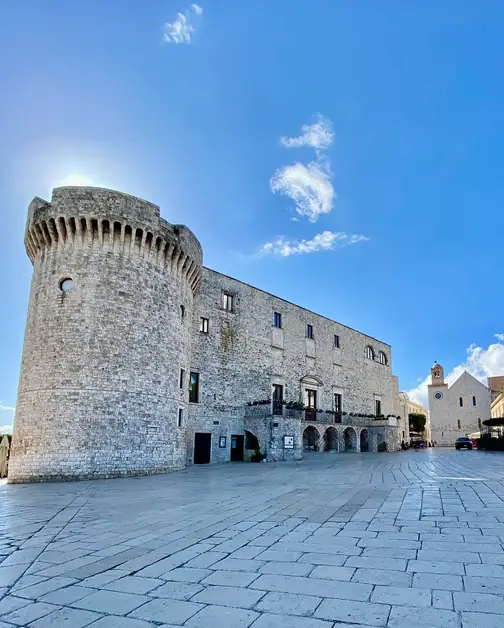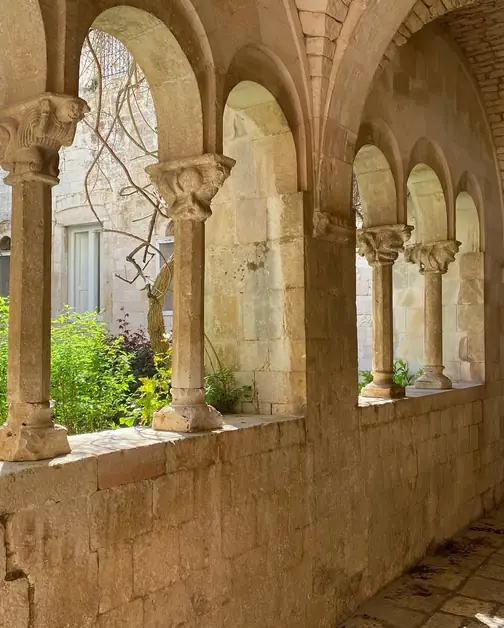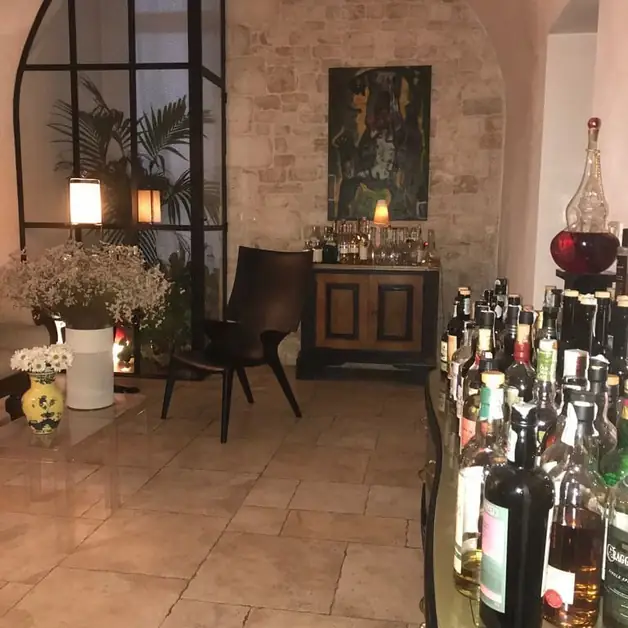The Labyrinth of Conversano
The medieval capital of Conversano, a spiritual and artistic symbol.
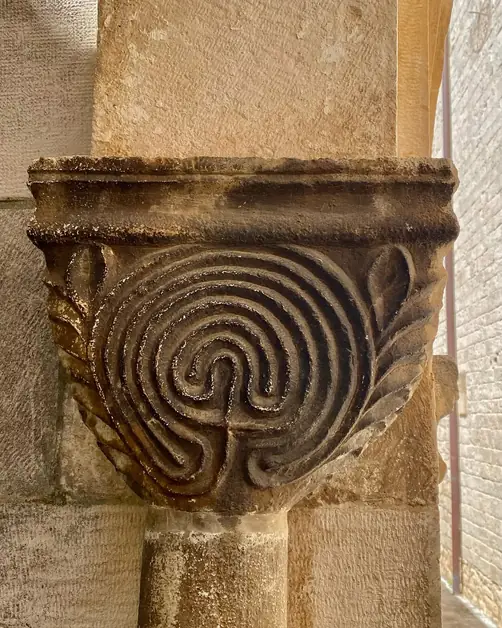
Walking through Conversano, a small jewel of the metropolitan city of Bari in Puglia, one often encounters surprising details, sculpted in stone and time. One such detail is the image of a medieval capital decorated with a labyrinthine motif, housed within the cloister of the ancient Monastery of San Benedetto.
This capital is one of the most fascinating elements of the monastic complex. The carved design represents a classic labyrinth, a recurring symbol in medieval art. Unlike the 'labyrinth' understood as a structure in which one can get lost, this type of labyrinth has only one possible path: it leads, with calm and patience, to the center.
In the Middle Ages, the labyrinth had a spiritual meaning. It was the symbol of the soul's journey towards God, a winding path but with a clear goal. In some cases, it was also used for meditation: monks could 'walk' it with their gaze or mentally, in an exercise of concentration and faith.
The cloister of San Benedetto, where this capital is located, is one of the most evocative places in Conversano. It is a silent place, enclosed by ancient walls, where time seems to have stopped. Walking among the columns of the cloister, observing the capitals carved with geometric patterns, animals, and religious symbols, is an experience worth having.
Conversano has ancient origins. The first urban nucleus dates back to the pre-Roman era when the city was called Norba. After being destroyed by barbarian invasions, the settlement rose again in the Middle Ages under the name Cupersanum, from which the current Conversano derives.
Over the centuries, Conversano has become an important center from a religious, political, and cultural point of view. Today it preserves numerous testimonies of its past, including the Aragonese Castle, the Romanesque Cathedral, and indeed the Monastery of San Benedetto, which houses the cloister with the labyrinth.
The city is also famous for being the site of a powerful female abbey. The abbesses of the Monastery of San Benedetto, for centuries, enjoyed rare privileges, such as episcopal authority. A very rare fact in the ecclesiastical world.
Visiting Conversano means entering a world where Romanesque architecture, sacred art, and medieval atmospheres blend with the daily life of a lively, well-kept, and welcoming town. The stones of its streets, hidden courtyards, loggias, and churches tell ancient stories to those who know how to observe.
The historic center of Conversano is compact and easily walkable. Strolling through its alleys means discovering picturesque corners, flowered balconies, artisan shops, and glimpses of the Apulian countryside.
In the evening, the city comes alive with warm lights and voices. The local eateries offer traditional Apulian cuisine: orecchiette, focaccia, dairy products, and local wines, in a relaxed and authentic atmosphere.
Conversano is located a few kilometers from Polignano a Mare and Monopoli and is easily reachable from Bari. It is an ideal stop for those who want to explore the most authentic Puglia, away from the more crowded tourist routes, but rich in history, art, and beauty.
The photo of the capital with the labyrinth is not just an artistic detail: it is a key to understanding the spirit of Conversano. A city that invites you to walk slowly, to get lost in its details, and to rediscover a sense of calm and depth in the heart of Puglia.
